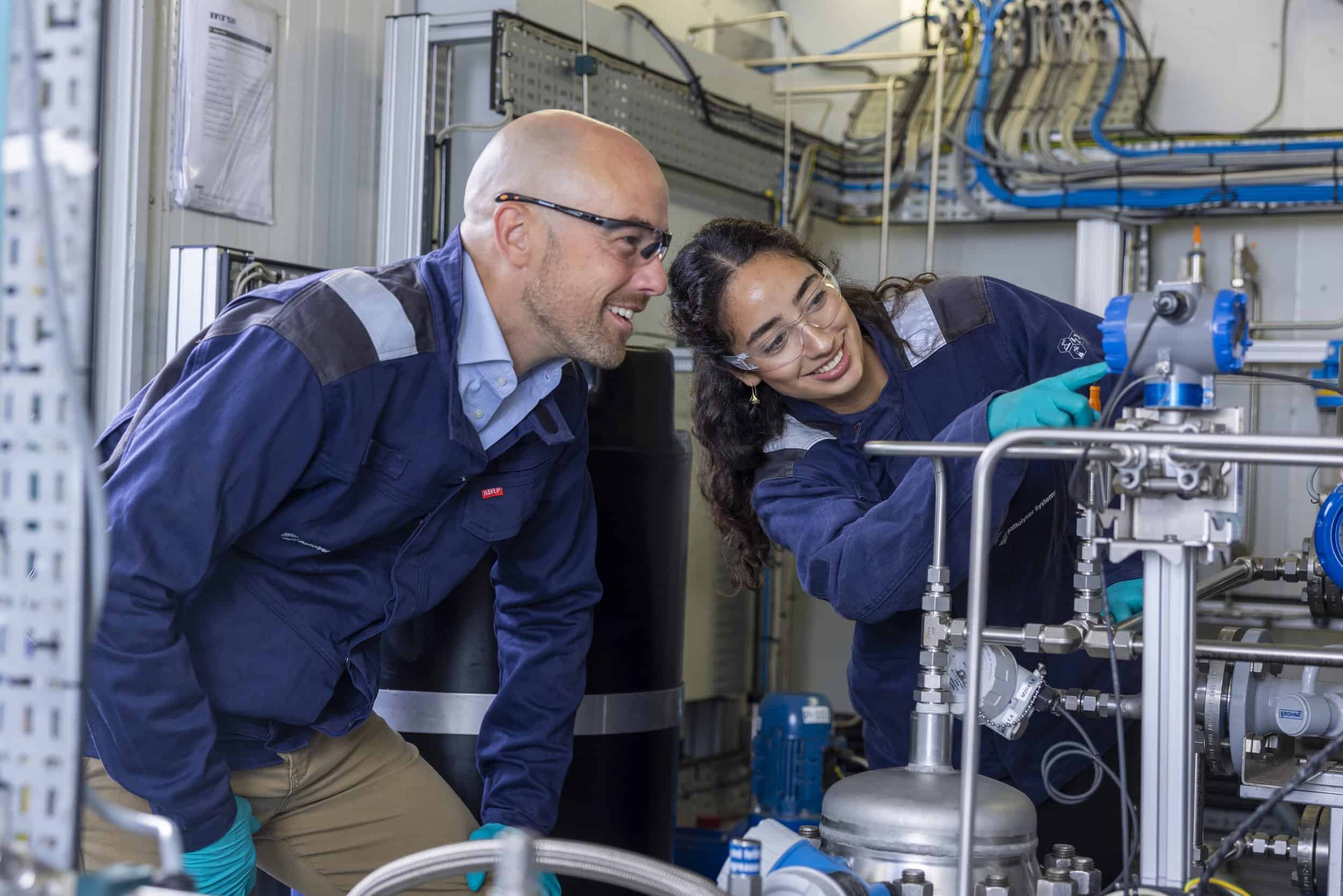
A group of researchers from Eindhoven University of Technology (TU/e, The Netherlands) think there is a future for the internal combustion engine after all. The secret lies in green hydrogen in combination with the noble gas argon. This gas is naturally present in the air and can be produced cheaply when air is separated. With the Argon Power Cycle (APC), CO2 and nitrogen oxide emissions can be reduced to a minimum. We covered this last week.
Just about everyone has already given up on the combustion engine, so why do they think that they are still viable?
Even before hearing the whole question, Jeroen van Oijen, researcher at the Faculty of Mechanical Engineering, bursts into laughter: “That’s utter nonsense. Perhaps it applies to light means of transport, such as passenger cars and small trucks or vans. They will all be electric in the future. But electric motors are not yet all that suitable for long journeys, so combustion engines have definitely not been written off yet.”
According to van Oijen, the main issue is the fossil fuel that goes into these internal combustion engines. “Other fuels are being sought to minimize the carbon footprint and bring down emissions close to zero. This is where you see fossil fuel really being written off. For example, we are already doing a lot of research on heavy-duty vehicles. You can see here that the emissions from diesel engines have been reduced progressively more over the past ten years. Legal requirements are also becoming stricter in order to meet targets. That’s a good thing, and these are needed in order to have even cleaner vehicles.”
How did you come up with the idea of combining argon and hydrogen?
“We have been researching combustion engines for a long time now. How can they be made more efficient? What fuels can we use? How can we cut down on emissions? Argon gas leads to very high efficiency rates and this has attracted some attention in the past. But that was just the theoretical side of things, the practical side proved more difficult. In Berkeley, colleagues were working on a gas engine that is ignited by a spark, just like a petrol engine. The efficiency of this engine was already slightly higher than that of a gas engine that works with air, but still not nearly as high as it could be theoretically.”
But van Oijen saw that there was more to it. “Then I really got bitten by the bug. I couldn’t let it go and I started playing around with it. I wanted to do it in a smarter and better way. Then I came up with the idea of seeing it as a diesel engine. Air is heavily compressed in this kind of traditional engine, which causes the temperature to rise. At the moment the pressure is at its highest, diesel is injected, which then ignites because of the high temperature levels. This causes the piston to move downwards with force.”
Why does argon gas work better then?
“If you put air under high pressure, it will vibrate. This ensures that the energy does not go directly to the piston when it ignites. This does not happen with argon gas, so all the energy from the fuel goes to the piston much more directly. This gives you a far more efficient engine. You can also recycle the exhaust gas. A condenser cools it down to below 100 degrees, so that the water disappears and the argon gas can be returned to the engine. Our partner lab in Berkeley has demonstrated that this closed circuit works. It’s not just efficient, but clean as well.”
This also applies if biofuel or natural gas is fed into the argon engine instead of green hydrogen, Van Oijen claims. “Using a special system, we can filter out the CO2 that is released during combustion. This does make the engine slightly less efficient, but the captured CO2 can be used again as a raw material for producing fuels, like methanol for example.”
The challenge for Van Oijen is to figure out in what order and under how much pressure argon gas, hydrogen and air should be injected for the most optimal engine. “Compare it with a swing, you push at the moment that makes the most sense – at the highest point. That also applies here. Igniting too early, which sometimes happens with argon because it heats up quickly, will cause your piston to break down faster. And if you ignite too late, the optimal pressure is already gone and you lose efficiency.”
Proving that this engine can be more efficient
To find out how this works, Van Oijen starts by using a numerical modelling approach. “The rest of the world is not really interested in that, but it does make me really happy. No one has ever looked at oxygen, argon and hydrogen in a combustion engine. Normally you have two components, now there are three. That makes it extra challenging and fun for me. I find it particularly interesting to look at flow problems. How does argon react, how does it mix and what happens when it is under pressure? These are mathematically extremely complex models that would take a super computer a few days to figure out. For me, the challenge is to demonstrate that you can make a clean and efficient engine this way. That all needs to be scientifically up to scratch,” Van Oijen explains.
Does it not matter to him whether or not a functioning version will ever be available on the market? “Of course that would be great. In the past, I did research into more efficient aircraft engines and every time I sit in an airplane, I still briefly look under the wing with a sense of pride. I have contributed to that. So it would certainly be a shame if we demonstrated that an argon engine works and then nothing came of it. But selling a technique is not my thing, I am not a salesperson.”
Collaboration with former Master’s student
In order to translate this research into a working engine, Van Oijen is working with, among others, his former Master’s student Miguel Sierra Aznar. Aznar has since founded a start-up around this technique, Noble Thermodynamics. “We have always stayed in contact, also during his PhD at Berkeley. In the meantime, I guess I could say that we have become friends. We work very well together and have a good rapport. He is a real entrepreneur and is constantly in talks with everyone so that we can make this a success.”








